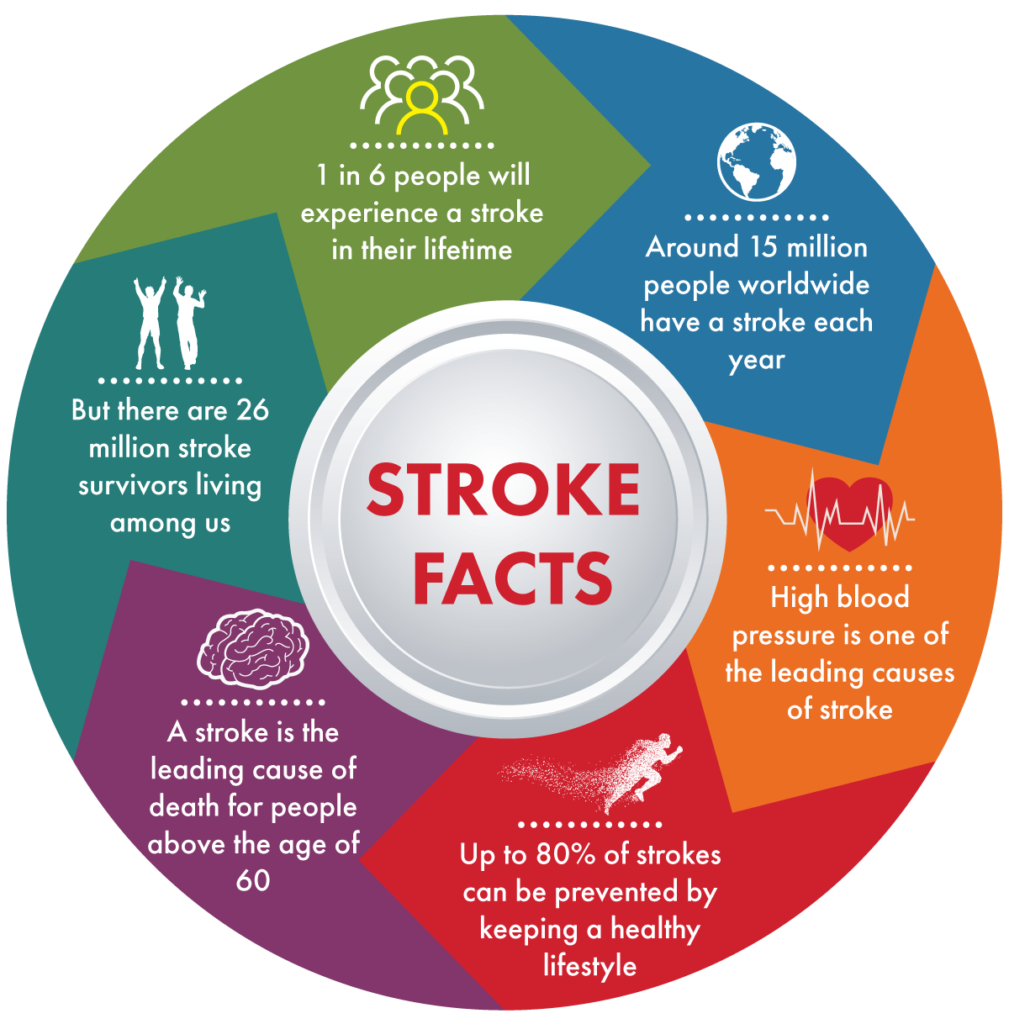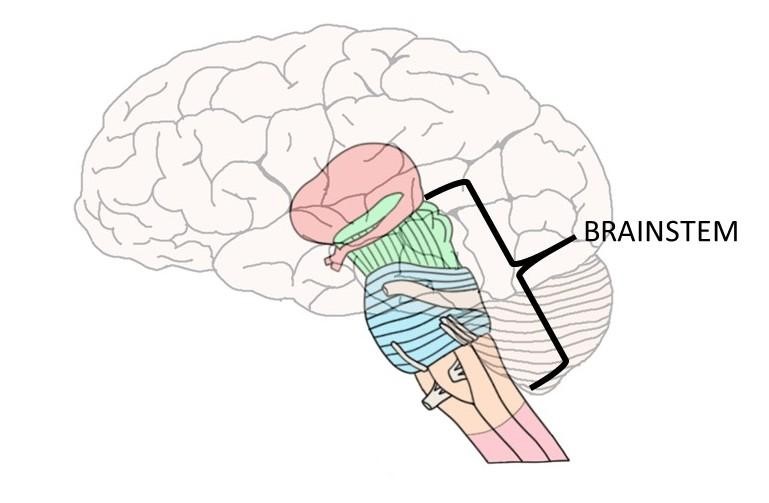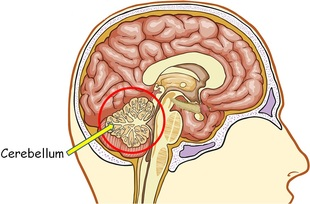World Stroke Day: Focusing on the Future and Recovering from a Stroke
Stannah is joining the cause this World Stroke Day !
Did you know:
A stroke can happen to anyone, at any age?
Today, October 29th, is World Stroke Day, so we’d like to take this opportunity to talk about strokes: their causes, symptoms and treatments – but we want to do more than that. We want to join the World Stroke Campaign’s cause this year!

Did you know:
Stroke is a leading cause of death and disability globally?
And because of this, it impacts everyone. The person who suffers from a stroke, their family, friends and communities. That is why post-stroke support is so important, and why we all need to be aware of what can be done to help stroke survivors.
But first, what is a stroke? What are the different types of stroke? How can we avoid strokes? What should you do if you think someone is having a stroke? And how do people get up again after a stroke? We take a look at those heroes who work so hard to recover from a stroke – their stories of struggles and ultimate success when they get back up again.
Table of contents
Stroke facts
What is a stroke?
What is memory and why is a stroke likely to affect yours?
Did you know that 90% of strokes are linked to 10 avoidable risks?
What to do if someone is having a stroke?
Stroke facts

What is a stroke?
Stroke (also known as cerebrovascular disease) can happen to anyone at any time. It happens when blood flow to any part of the brain is cut off – the brain doesn’t get the oxygen or nutrients it needs, and therefore stops functioning properly or even starts to die. When brain cells die, the abilities controlled by that area of the brain are lost – so this depends on the part of the brain affected, it could be memory or muscle control. A stroke can happen for one of two reasons: when a blood vessel that leads to the brain is blocked by a clot, or when it bursts.
Types of Stroke
There are two types of stroke caused by a single blood vessel that affects blood flow to the brain:
- Ischemic stroke – The most common type of stroke, which makes up about 80% of strokes worldwide.
An ischemic stroke is caused by arteries to your brain becoming extremely narrow or blocked by a blood clot, stopping blood from flowing to a certain part of your brain. A blood clot could be formed by:
- Fatty deposits (plaque) that build up in arteries
- A blood clot or other debris forming away from your brain (often in your heart), being pumped around your body and lodging in brain arteries which are extremely narrow.
- Hemorrhagic stroke –
A hemorrhagic stroke can have several different causes, all of which lead to a blood vessel in the brain leaking or rupturing. Causes include:
- Uncontrolled high blood pressure (hypertension)
- Overtreatment with anticoagulants (blood thinners)
- Weak spots in your blood vessel walls (aneurysms)
Although there are 2 main ways a stroke can occur, the part of the brain a stroke affects, and the extent of brain tissue affected can mean very different things for the person suffering from a stroke.
Every stroke is unique, but strokes tend to affect people in similar ways.
Here are some examples:
Right brain
Because the right side of the brain controls the left side of the body, if a stroke affects the right side of the brain, it will result in effects on the left side of the body. However, the right side of the brain is also the more artistic and creative side. Imagination, intuition, insight, art and musical awareness all happen in the right side of the brain. That means that if a stroke affects this part, effects could include:
- Paralysis on the left side of the body
- Quick, inquisitive behavioural style
- Vision problems
- Memory loss
Left brain
Just as the right-hand side of the brain controls the left-hand side of the body, the left-hand side of the brain controls the right-hand side of the body. However, whereas the right side of the brain is more artistic and creative, the left side is more academic and logical. The left brain controls analytic thought, logic, language, reasoning, writing, numbers and scientific thought. That means that if a stroke affects the left brain, effects could include:
- Paralysis on the right side of the body
- Slow, cautious behavioural style
- Speech/language problems
- Memory loss
Brain stem stroke
Your brain stem is just above your spinal cord and connects your spinal cord to your brain. Because of its vital position, connecting your brain to the rest of your body, a stroke in the brain stem can affect vital functions, for example breathing and your heart beating. Depending on the severity of the stroke, it could impair speech and hearing, but could even leave someone in a ‘locked-in’ state, in which the person is generally unable to speak or move part of their body below their neck.

Source: https://www.neuroscientificallychallenged.com/glossary/brainstem/
Cerebellar stroke
A cerebellar stroke is a less common type of strokes. It can happen in either of the two ways stated above, but it causes a part of the cerebellum to be completely deprived of blood.
The cerebellum is located behind the top part of the brain stem (where the spinal cord meets the brain) and is made of two hemispheres (halves). This part of the brain regulates motor movements – voluntary movements such as:
- Posture
- Balance
- Coordination
- Speech
If any of the blood vessels that feed the cerebellum get blocked, they can cause a stroke. Although the symptoms of this form of stroke appear nonspecific and are often ignored. If left untreated, a cerebellar stroke could be life-threatening.

Source: http://brainmadesimple.com/cerebellum.html
What is memory and why is a stroke likely to affect yours?
What is memory?
There are three major ways in which your brain processes a memory: encoding, storage and retrieval.
- Encoding
When you sense that any event, person, object or stimuli is important (and you want to remember it, for example the name of a person you just met) small chemical, visual, auditory and activity-based stimuli get converted into an electrical message that can be transferred from the neurons.
- Storage
The memory created is then stored or kept in the brain to be used later.
- Retrieval
Once stored, the brain recalls the memory when you need it again (for example when you meet the same person again). Your visual memory, auditory complex, speech centre etc. will all spark the memory (for example of the person’s name).
Check out this diagram to see your memory in action:

Source: http://brainmadesimple.com/memory/
Your different types of memory all work together to help you retain all sorts of information, and then recall it again, from all sorts of different stimuli. Different types of memory include:
Verbal: memory of names, stories and information having to do with language
Visual: memory of shapes, faces, objects and directions
Informational: memory of information and skills or trouble learning new things
A stroke can commonly affect at least one type of memory, as different types of memory are encoded and stored in different parts of the brain. That means that whichever part of your brain is affected by a stroke, it’s likely to have some sort of effect on either the way your body processes stimuli, or stores memories of those stimuli.
Symptoms of memory loss after a stroke may include:
Confusion or problems with short-term memory
Wandering or getting lost in familiar places
Trouble making monetary transactions
Difficulty following instructions
The good news is that memory often gets better with time after a stroke.

Did you know that 90% of strokes are linked to 10 avoidable risks?
On World Stroke Day 2017, the campaign slogan was:
What’s your reason for preventing stroke?
It focussed on raising awareness of the small things we can do to avoid strokes. It made people think about the people who would be affected if they had a stroke. Have a think. Who would that be for you? And which of the following could you do to make sure you’re there for those people for years to come?
These are the 10 risk factors of a stroke – if everyone worked at improving these, 90% of strokes could be avoided.
- If you have high blood pressure, make sure it’s under control
- Do moderate exercise at least 5 times a week
- Eat a healthy, balanced diet (high in fruit/vegetables, low in sodium)
- Reduce your cholesterol
- Maintain a healthy BMI (or waist to hip ratio)
- Stop smoking and avoid second-hand smoke
- Reduce the amount of alcohol you drink (men: 2 units/day, women: 1 unit/day)
- Detect atrial fibrillation and treat it
- Reduce your risk of diabetes
- Learn more about strokes (you’re already doing that now!)

What to do if someone is having a stroke?
Every second counts when someone is having a stroke, so recognizing the signs could make a huge difference and even save the person’s life.
Stroke symptoms come on very suddenly – the person can be fine one minute, and the next something’s not right. If you see any of these symptoms call 911 immediately:
-
- Sudden numbness or weakness of the face, arm or leg, especially on one side of the body – you can check this by asking the person to smile or raise both arms. If one side of their mouth droops, or one arm drifts down call 911.
- Sudden confusion, trouble speaking or understanding – does their speech sound jumbled or slurred?
- Sudden trouble seeing in one or both eyes
- Sudden trouble walking, dizziness, loss of balance or coordination

Call for help even if the symptoms disappear after a few seconds – these could be mini-strokes and require medical attention. It takes minutes for brain cells to start dying, so the faster you act, the more chance you have of helping them recover.
If you think someone’s having a stroke:
DO
- Call 911
- Take note of when you first saw the symptoms
DON’T
- Let the person go to sleep
- Give them food, drink or medication
- Let them drive themselves to the hospital
Rehabilitation
Once the effects of a stroke have passed, rehabilitation is usually the next stage of stroke recovery. This will depend on the patient, as their path to recovery will depend on the effects of the stroke – it may be in the hospital, in a specialized facility, in outpatient care or even at home. They may need to re-learn how to do certain things or change the way in which they function in order to compensate for changes caused by the stroke. The way in which the stroke affects the person will determine the types of therapy they need, and the amount of work they need to do to regain their independence.
The goal of most stroke survivors is to recover as much independence as possible, which is usually done by:
- improving mobility
- strengthening motor skills
- working on memory and problem solving
- working on communication skills through speech therapy
Stroke survivors should set achievable goals for themselves. They should start with the simple things, taking it one step at a time. Focus on self-grooming – bathing, dressing and grooming. They should start using their affected limbs right away, building strength and trying to regain movement as early as possible. Then build up to the bigger things – thinking into the future do they want to go back to work? What are the smaller steps they can focus on to help them achieve their goals?

The American Stroke association has put together lots of useful information for stroke survivors, including these tips:
- Keep moving
- Challenge yourself
- Exercise consistently
- Take time for yourself
- Be patient with yourself
- Join stroke support groups
There is also help out there for stroke survivors that you may not be aware of. Examples are:
- The Aphasia Software Finder – a website that has information about apps and software programs in the English language for people with aphasia.
- This list of the most helpful apps for stroke survivors
- A brain-computer interface that helps stroke survivors “train” uninjured areas of the brain
- Virtual Reality Therapy Designed to Help Stroke Patients Recover
They also collected inspirational stories from stroke survivors which are definitely worth a read. Finding people who have gone through similar situations will gives us hope for the future and a community with whom we can identify. Check out the stories here.
Support from care givers and loved ones
Strokes can be incredibly isolating. Mobility difficulties can prevent stroke survivors from getting out and about, and if their communication skills were affected by the stroke, it can be extremely frustrating for a stroke survivor to communicate with those around them.
If you’re a caregiver or one of your loved ones has recently suffered from a stroke, the best thing you can do is be there for them. The cure for isolation is other people, and although it might be a long road to recovery, you being by their side will ease the burden. Social support is just as important as physical therapy for stroke survivors, so that they can begin their emotional recovery.
For this reason, stroke support groups are extremely important. Although the effects of a stroke are always different, the emotional journey of many stroke survivors is similar. The challenges and frustrations are shared, which makes support from people going through the same thing essential. A good stroke support group will also promote a can-do attitude. Support, encouragement and the knowledge that you’re still you and can still function as a part of society, can make an incredible difference to recovery. A positive attitude, even in the face of adversity, is the key to both emotional and physical healing.
At Stannah, we’ve come across numerous customers struggling with all kind of conditions that affected their mobility and ability to go about their lives. From our experience with our customers, stroke survivors often experience difficulty going up and down the stairs, since paralysis on one side of the body is often one of effects of a stroke. In the aftermath of a stroke, symptoms such as muscle weakness, paralysis and fatigue can be temporary or permanent, depending on the way in which the stroke affected your loved one; but in both cases, not to be able to control one part of the body can leave them feeling nervous and unsure about using the stairs again. Rehabilitation, off course, is a key element on the journey to recovery, but more often than not, and while still recovering, our loved ones will end up putting themselves in danger when trying to get up and down the stairs, which could lead to falls and additional injuries. A stairlift could be the solution for your loved one to safely navigate their house, while providing you with the peace of mind that they won’t fall down the stairs. Find out more about our range of stairlift options here.
Sources:
Heart and Stroke Canada
World Stroke Organization
The Brain Made Simple
Futher reading:
World MS day: “A day to celebrate global solidarity and hope for the future”
Parkinson’s disease and its effects on mobility and balance
World Heart Day: Preventing Heart Disease & Promoting Healthier Living

 USA
USA